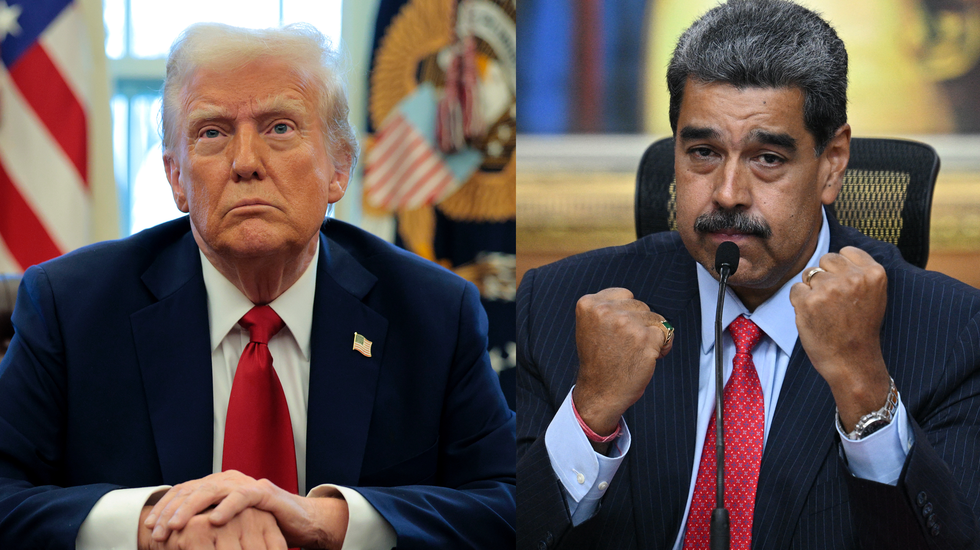
allthatsinteresting.com
The Tragic Murder Of Mollie Tibbetts, The College Student Who Was Fatally Stabbed While On A Run
FacebookMollie Tibbetts’ murder became a political flashpoint because her killer had entered the United States illegally.
In the small, quiet town of Brooklyn, Iowa, 20-year-old University of Iowa student Mollie Tibbetts went for an evening run on July 18, 2018, something she did regularly. But this time, she never returned.
She was soon reported missing, and what followed was one of the largest manhunts in Iowa history. For weeks, investigators and volunteers searched through fields and farms, hoping that she might still be alive somewhere.
That hope ended when her body was discovered in a cornfield in Poweshiek County. The man who led authorities to her body, Cristhian Bahena Rivera, told the police a disturbing story about following her while she jogged, fighting with her, and “blacking out” before finding her body in his car trunk.
The Sudden Disappearance Of Mollie Tibbetts
Mollie Cecilia Tibbetts was born on May 8, 1998, in San Francisco, California, to Rob Tibbetts and Laura Calderwood. After her parents separated, she and her siblings all moved to Iowa to live with their mother.
Later on, Mollie Tibbetts attended Brooklyn-Guernsey-Malcom High School. She then enrolled at the University of Iowa to study psychology. Outside of school, she often babysat for local families, and she worked at a children’s day camp with Grinnell Regional Medical Center. Known for her “happy-go-lucky” nature, she participated in choir, theater, and cross country running, and she had hopes of becoming a child psychologist someday.
On July 18, 2018, the then-20-year-old Mollie Tibbetts was staying at her boyfriend’s brother’s house in Brooklyn, Iowa. She was dog-sitting for her boyfriend Dalton Jack and his brother Blake Jack, who were both out of town at the time, working on construction sites.
That evening, she left the house to go for a run, which was something she did often. At first, nothing about the night seemed unusual.
FacebookMollie Tibbetts, pictured during her high school graduation.
When she didn’t show up for work the next morning, Dalton Jack received a call from her coworker. Dalton alerted her friends and family members, asking if they had heard from her. Her loved ones all soon realized that something was terribly wrong, and they reported her missing.
Tibbetts’ disappearance quickly became national news. Numerous volunteers from all across Iowa joined in the search effort. Her father also flew in from California to Iowa to help during the investigation. Police dogs, drones, and ground teams scoured fields and wooded areas, and posters and billboards with Tibbetts’ face went up all across the Midwest.
Meanwhile, authorities examined her Fitbit and cell phone data, hoping to narrow down her location. They eventually determined that Tibbetts had been running at a steady pace on the evening of July 18, 2018, when she suddenly stopped at around 8:28 p.m. Chillingly, her phone then began to move in another direction at a speed of 60 miles per hour. Clearly, she was in some kind of vehicle, and she had likely been abducted.
For weeks, her loved ones had no idea where she was or who could’ve taken her. Then, a piece of security footage changed everything.
A Shocking Lead In The Case — And The Tragic Discovery Of Mollie Tibbetts’ Body
Law&Crime/Logan CollinsA neighbor’s home surveillance cameras captured a black Chevrolet Malibu near Mollie Tibbetts before she vanished.
Investigators reviewing home surveillance cameras from a home near Mollie Tibbetts’ jogging route captured a black Chevrolet Malibu driving near her repeatedly on the night she vanished. The car was eventually traced back to a 24-year-old farmworker named Cristhian Bahena Rivera.
Rivera, who lived and worked in the rural Poweshiek County, was an undocumented immigrant from Mexico who reportedly entered the United States when he was 17. He was employed at Yarrabee Farms in Poweshiek County under a false name. Though he was seemingly quiet and hardworking, a woman named Brooke Bestell later came forward and said he’d made her uncomfortable when he pursued her romantically: “He would just stare. He wouldn’t really like talk. Something about him was off.”
When police brought Rivera in for questioning, he initially denied ever seeing or speaking with Tibbetts. However, his story later changed.
Rivera eventually confessed to investigators that he approached Tibbetts because he thought she was attractive. He also said he fought with her after she threatened to call the police on him. Then, Rivera claimed that he “blacked out” and later found her body in the trunk of his car.
As Poweshiek County Attorney Bart Klaver later testified: “He admitted that he followed her and he got out of his car. He admitted to jogging to catch up with her, that he wanted to get close to her. He admitted that Mollie didn’t want to have anything to do with him, that she threatened to call the police, and he admitted he became angry at that time.”
WQADMollie Tibbetts’ remains were uncovered in a cornfield in Poweshiek County, Iowa.
Furthermore, Rivera also led police to a cornfield where he had apparently buried Tibbetts’ body under stalks and other plants.
On August 21, 2018, Mollie Tibbetts’ remains were recovered. She had been fatally stabbed, and wounds were found on her head, neck, abdomen, and hands. An autopsy later determined that she’d died of “multiple sharp force injuries.” Rivera was quickly arrested and charged with first-degree murder.
The discovery of Tibbetts’ body ended the search, but devastated her family, who had held onto hope until the very end that she was still alive.
The story of her horrific murder made national headlines and also became a political flashpoint, especially after it was revealed that Rivera had entered the United States illegally. For some, the case became a rallying cry against illegal immigration. President Donald Trump cited the case as proof of the need for tougher security at the U.S.-Mexico border specifically. Some local Iowa politicians used the case as a talking point for an election that year.
However, as Tibbetts’ loved ones grieved, some of her family members publicly asked that her name not be used as a political tool.
Cristhian Bahena Rivera’s Murder Trial And The Somber Aftermath
Police PhotoCristhian Bahena Rivera was arrested in August 2018, and he was later convicted of murdering Mollie Tibbetts.
Cristhian Bahena Rivera’s trial was delayed due to the COVID-19 pandemic, but it began in May 2021 at the Scott County Courthouse in Davenport, Iowa.
Prosecutors presented Rivera’s police interview, surveillance footage of his car, and forensic evidence linking blood in his trunk to Mollie Tibbetts. They argued that he deliberately followed her, fatally attacked her after she rejected him, and tried to cover up the murder by hiding her body.
The defense claimed that Rivera was wrongly coerced into a confession and that his interrogation was affected by a language barrier. They argued that he was confused and overwhelmed by the investigators.
Rivera himself also took the stand and made a stunning new claim. He testified that two masked men, armed with a knife and a gun, entered his home. Rivera said these two men forced him to drive around in his car and abduct Tibbetts. He claimed the men put her in his trunk, after which he disposed of her body in the cornfield. Rivera insisted that he only kept quiet about these masked men because he feared for his family’s safety.
But investigators found no evidence of masked men. The jury also didn’t buy Rivera’s new story. On May 28, 2021, Rivera was found guilty of first-degree murder. He was later sentenced to life in prison without parole, and he’s now serving out his sentence at the Iowa State Penitentiary in Fort Madison.
Iowa Department of CorrectionsThe Iowa State Penitentiary, where Cristhian Bahena Rivera is serving out his sentence.
Since Rivera was an undocumented immigrant from Mexico, his murder of Tibbetts had been a heated topic in political debates about immigration ever since his arrest. But some of Tibbetts’ family members urged people not to blame all immigrants — especially Hispanic immigrants — for her death.
Mollie Tibbetts’ father, Rob Tibbetts, wrote a column in which he encouraged ongoing debates on immigration, but also declared: “Do not appropriate Mollie’s soul in advancing views she believed were profoundly racist.”
Notably, Rob Tibbetts also apologized to any Hispanic people who were “beset by the circumstances of Mollie’s death” and said, “The person who is accused of taking Mollie’s life is no more a reflection of the Hispanic community as white supremacists are of all white people.”
Mollie Tibbetts’ aunt Billie Jo Calderwood and second cousin Sam Lucas also pleaded for her case to be left out of the political sphere. “I don’t want Mollie’s memory to get lost amongst politics,” Calderwood said.
In the aftermath, the Mollie Tibbetts Memorial Run was created in Brooklyn, Iowa, retracing the route of Tibbetts’ final jog, so that people can remember her while finishing her route that she never got to complete.
For her loved ones, a sense of justice has been served with Rivera’s sentencing, but they will continue to live with the absence of a daughter, a sister, and a friend who deserved a future she never got to see.
After reading about the murder of Mollie Tibbetts, learn about Ellen Greenberg, the woman whose stabbing death was controversially ruled a suicide. Then, go inside the chilling story of Shelly Knotek, the abusive mother-turned-killer who now walks free.
The post The Tragic Murder Of Mollie Tibbetts, The College Student Who Was Fatally Stabbed While On A Run appeared first on All That's Interesting.














